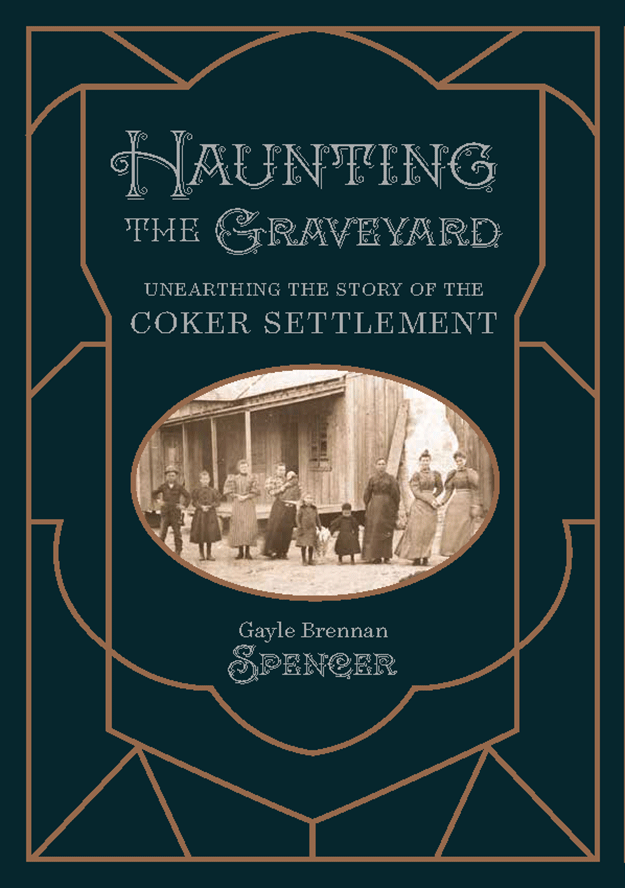Above, William C. Marmon wed Agnes Zacharriah Autry in a double wedding ceremony in the Coker Church in 1899. Photograph courtesy of Virginia Heimer Ohlenbusch from Haunting the Graveyard: Unearthing the Story of the Coker Settlement
In the late 1800s, itinerant photographers wandered the Texas countryside, making a living talking hardworking farming families into the need to document their lives on their homesteads. The result was that neighbors often had their farmstead portraits taken during the same time period.
In Haunting the Graveyard: Unearthing the Story of the Coker Settlement, published by the Coker Cemetery Association in 2019, I organized the book by a combination of themes and timelines. This meant that I used most of the itinerant farm photos in a chapter describing the efforts of those making a living in the area of San Antonio known as Buttermilk Hill. But this also meant my favorite details in two of these remained unlinked in the book.

The first image shows the large family of Sarah Jane Coker Autry (1860-1930), widowed in 1895 and left with a dairy to run. The horse and mules, Kit and Molly, were critical members of the farmstead. Sarah was dependent on them for her daily delivery of milk products to folks in town. The inclusion of the pet goat beside Dora Jane is precious. Sadly, poor Janie perished in 1900 at age seven after her clothes were set ablaze as she was filling a lamp with kerosene.

The second one shows the fancier two-story home of Jeanette Tomasini (1867-1917) and Augustus Gulick (1849-1933). But this is the part I love – the two men on the right. According to Goldie Tomasini Casteel, the one on the far right is William Marmon (1867-1954). On his left is Mitchell Alfred (Fred) Tomasini (1879-1939), one of Jeanette’s younger brothers. Neither seemed pleased to pose. The pair presumably is working for pay in the employ of the Gulicks; they have strong motivation to earn money.
Which brings us back to the Autry photo. The two sisters on the right, only a year apart in age, appear as close as twins. Holding hands, Margaret Ann (1880-1961) and Agnes Zachariah (1881-1964) seem bursting with eagerness to enter a new phase in their lives.
At this point, they probably are already engaged to the two young men pictured on the Gulick farm. They were heading toward a double wedding in the original wooden Coker Church. A double wedding of sorts:
Thomas C. Marmon shared an amusing tale with Jeanette Jones illustrating the frugality sometimes surrounding the special occasions…. Tom claimed the grooms could not afford two suits so they shared one, trading clothes halfway through the ceremonies at the Coker Church….
Both Doris Tomasini Vizza and Janie Marmon Montgomery believed the tale apocryphal. If anything were shared it would have been the wedding dress made by Sarah Autry, explained Doris. William Marmon was ‘tall and thin,’ while her father Fred was ‘short and tubby.’
Haunting the Graveyard: Unearthing the Story of the Coker Settlement
Doris’ theory makes sense. The fabric and yards of lace required to make the stunning wedding dress pictured on Agnes must have stretched the family budget greatly. Sarah Autry was well known for her dressmaking skills, but it seems unimaginable she, while running a dairy, could have spared the time to make two dresses for her daughters who appear the exact same size and were planning on getting married on the same day. Traditionally, wedding dresses and veils were cherished and carefully stored for sharing and passing down through generations.
Apparently, no photo existed of Margaret’s dress. This might be explained by the ways of itinerant photographers. One might have showed up with his rolled-up canvas backdrop while Agnes was taking her turn in the dress. Perhaps the suit was shared by the men as well; despite the assessment offered by his daughter, Fred did not appear “tubby” yet.
These details probably are too trivial for many. Perhaps I’m only sentimental about the concept of sharing the dress.
My sister Susan was married a few years before me, and I thought her dress ideal. When it came my turn, my mother insisted I shop for a new one. My sister’s dress was long-sleeved; I was getting married in the summer, she argued. Wedding departments were horrible, slowly dragging out one dress at a time that I would never be caught dead in. I’d worn my sister’s hand-me-down dresses for years and, frankly, was always thrilled with each one I inherited. I won and donned her gown gladly, perhaps in the same loving spirit of the Autry sisters.

Proceeds from the sale of Haunting the Graveyard: Unearthing the Story of the Coker Settlement benefit the Coker Cemetery Association. It is available in print and ebook formats from Material Media.



